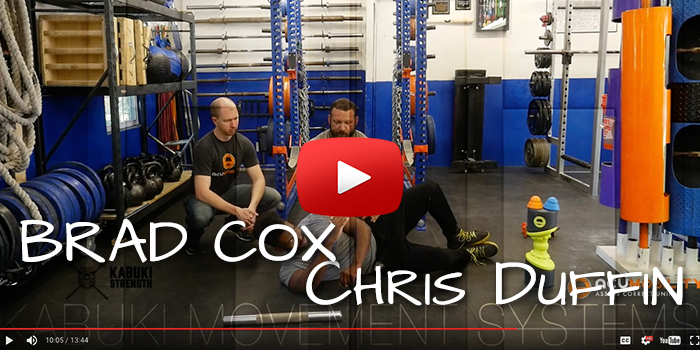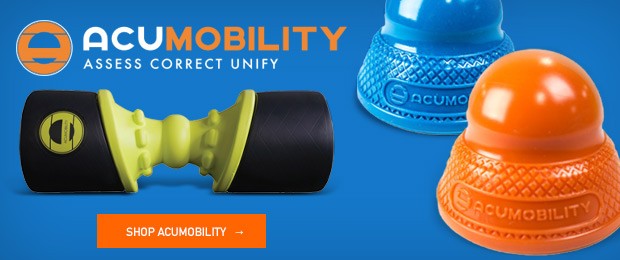
Brad of Acumobility and I were recently working with a strongman athlete named Semaj at Titan Barbell in Massachusetts. Semaj had recently injured his shoulder and was having trouble with overhead pressing movements.
During assessments, we found that he has poor internal rotation of the shoulder with limited overhead range of motion and restricted trap and pec muscles. When faced with this situation, our goal is to provide corrective strategies to improve end range of motion and stability in the shoulder girdle. We accomplish this through the progressions shown in the following video.
WATCH: Interview with Acumobility’s Brad Cox
This approach relies on our Vise Technique using the Acumobility Balls and the Boomstick. We worked on the external rotators, subscapular area, and lat muscles while working through both internal and external rotation. After this, the rhomboids and pecs were attacked in the same manner while adding pressing movements.
After the Vise Technique was employed, I used a number of DNS-based drills to improve stability of the shoulder girdle. The goal of these drills is for the shoulder to find stability through the right points instead of recruiting and tightening the pecs and traps. These drills are also available on Kabuki.MS
One of the key takeaways from this video is that it is important to find and repair both restrictive and stability issues by targeting specific patterns that cause the problems. The VISE Technique is proven very powerful dealing with mobility restrictions as well as managing underlying connection issues that are present in many lifters.
In a follow-up with Semaj, he informed us he was able to move through all of his overhead exercises in his completion without pain, and also with greater strength. This video demonstrates how quickly and easily some nagging issues can be cleaned up with the correct approach.
Brad Cox is the CEO and Co-Founder of Acumobility and Chris Duffin is the CEO and Co-Founder of Kabuki Strength.











2 Comments